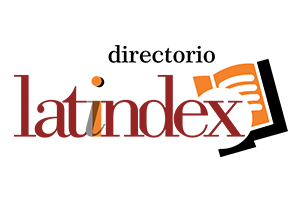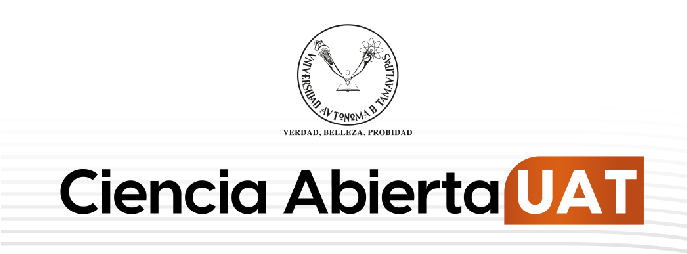Effect of consumption of shrush legumes (Acacia rigidula and Havardia pallens) on sperm morphology of growing male goats
DOI:
https://doi.org/10.29059/cvpa.v1i1.11Keywords:
forage shrubs, male goats, sperm morphologyAbstract
The aim of the present work was to evaluate the effect of the consumption of diets formulated with Acacia rigidula (Benth) Seigler & Ebinger and Havardia pallens (Benth) Britton & Rose, on the reproductive capacity of Creole male goats reared under stable conditions in Ciudad Victoria, Tamaulipas. Fifteen young male goats (approximately 3-4 months old) were randomly assigned to native plant diets or a control diet, with 35% inclusion. The aspects evaluated were scrotal circumference (Ces), mass motility (MM), and sperm morphology, which were determined twice a month, from August to December. In order to observe whether there were differences in sperm motility and morphology between the groups (Acacia rigidula AR, Havardia pallens HP and Medicago sativa CON), frequencies and percentages were obtained using the Kruskal-Wallis test. In addition, a variance analysis was performed between the three groups to establish differences in bromatological characteristics, secondary compounds, and scrotal circumference. The results obtained show differences in crude protein and cell wall content (p < 0.05). The concentration of secondary compounds was different between the groups (p < 0.05) as well as the mass motility (five-point scale, p < 0.05). Therefore, we can conclude that the use of shrubs such as HP and AR can be offered at a percentage of 35% without affecting sperm morphology in male goats. Future investigations may also try to prove higher levels than 35% of inclusion in adult animals to determine its effect on goats older than those used in the present study.
References
Acamovic, T., & Brooker, J. D. (2005). Biochemistry of plant secondary metabolites and their effects in animals. The Proceedings of the Nutrition Society, 64(3), 403-412. https://doi.org/10.1079/pns2005449
Agga, G. E., Udala, U., Regassa, F., & Wudie, A. (2011). Body measurements of bucks of threegoat breeds in Ethiopia and their correlation to breed, age and testicular measurements.Small Ruminant Research: The Journal of the International Goat Association, 95(2-3), 133-138. https://doi.org/10.1016/j.smallrumres.2010.09.011
Aisen, E., Quintana, M., Medina, V., Morello, H., & Venturino, A. (2005). Ultramicroscopic andbiochemical changes in ram spermatozoa cryopreserved with trehalose-based hypertonic extenders. Cryobiology, 50(3), 239-249. https://doi.org/10.1016/j.cryobiol.2005.02.002
Andrews, W. H. (1996). AOAC INTERNATIONAL’s three validation programs for methods usedin the microbiological analysis of foods. Trends in Food Science & Technology, 7(5), 147- 151. https://doi.org/10.1016/0924-2244(96)10017-0
Barrozo, D., Buzanskas, M. E., Oliveira, J. A., Munari, D. P., Neves, H. H. R., & Queiroz, S.A. (2012). Genetic parameters and environmental effects on temperament score and rproductive traits of Nellore cattle. Animal: An International Journal of Animal Bioscience, 6(1), 36-40. https://doi.org/10.1017/S1751731111001169
Boligon, A. A., Silva, J. A. V., Sesana, R. C., Sesana, J. C., Junqueira, J. B., & Albuquerque, L. G. D. (2010). Estimación de parámetros genéticos de peso corporal, circunferencia escrotal y volumen testicular medidos a diferentes edades en bovinos Nellore. Revista de Ciencia Animal, 88(4), 1215-1219.
Cámpora, M. C. (2016). Alimentos funcionales: tecnología que hace la diferencia. RIA. Revista de Investigaciones Agropecuarias, 42(2), 131-137.
Chang, C. C., Yang, M. H., Wen, H. M., & Chern, J. C. (2002). Estimation of total flavonoid content in propolis by two complementary colorimetric methods. Journal of Food and Drug Analysis,10(3), article 3.
Danis, R. B., & Samplaski, M. K. (2019). Sperm morphology: History, challenges, and impact on natural and assisted fertility. Current Urology Reports, 20(8), 43. https://doi.org/10.1007/s11934-019-0911-7
Delgado Mendive, M. (2015). Relación entre los parámetros morfológicos, de gameto a blastocito, con las anomalías cromosómicas y el éxito reproductivo: Tesis para obtener el grado de doctor. Facultad de Veterinaria, Universidad Complutense de Madrid.
Díaz Yerena, E. (1991). Proteína sobrepasante en dietas de caprino consumidas en agostadero. https://cd.dgb.uanl.mx/handle/201504211/1361
Eloy, A. M. X., & Pereira, E. P. (2013). Stress on male goat reproduction. Revista Brasileira de Reproducáo Animal, 37(2), 153-163. http://www.cbra.org.br/pages/publicacoes/rbra/v37n2/pag156-163%20(RB454).pdf
Espitia-Pacheco, A., Montes Vergara, D. E., & Lara-Fuenmayor, D. (2018). Evaluación del desarrollo testicular y medidas morfométricas en ovinos de pelo colombiano. Agronomía Mesoamericana, 29(1), 165-175. https://doi.org/10.15517/ma.v29i1.27550
Ferreira, M. J., & Luengo, F. E. (2007). La dieta como concepto terapéutico. Conceptos alimentos funcional y nutracéutico. Situación actual de los alimentos funcionales y nutracéuticos. Aspectos legales. En Sociedad Española de Cardiología (Eds). Alimentos funcionales y nutracéuticos (pp. 1-81). Acción Médica.
Gallego-Calvo, L., Gatica, M. C., Guzmán, J. L., & Zarazaga, L. A. (2018). Reproductive responses to sexually active buck of does treated with melatonin when body weight/bodycondition is increasing or decreasing. Animal Reproduction Science, 190, 75-84. https://doi.org/10.1016/j.anireprosci.2018.01.009
García-Vázquez, F. A., Gadea, J., Matás, C., & Holt, W. V. (2016). Importance of sperm morphology during sperm transport and fertilization in mammals. Asian Journal of Andrology, 18(6), 844-850. https://doi.org/10.4103/1008-682X.186880
Gatimel, N., Moreau, J., Parinaud, J., & Léandri, R. D. (2017). Sperm morphology: assessment, pathophysiology, clinical relevance, and state of the art in 2017. Andrology, 5(5), 845-862. https://doi.org/10.1111/andr.12389
Gutiérrez, O. E., Landa, J., Uresti, J. F., & González, R. (1990). Utilización de la proteína en arbustivas consumidas por caprinos en agostaderos. En memorias del IV congreso nacional de manejo de pastizales, Monterrey, N.L., México. p (Vol. 13).
Ibrahim, M., Mannetje, L. T., & Ospina, S. (2003). Prospect and problems in the utilization of tropical herbaceous and woody leguminous forages. In VI International Symposiumon the nutrition of herbivores. Proceedings of an International Symposium held in Mérida,México (pp. 35-55).
Kruger, T. F., Menkveld, R., Stander, F. S., Lombard, C. J., Van der Merwe, J. P., van Zyl, J. A., &Smith, K. (1986). Sperm morphologic features as a prognostic factor in in vitro fertilization. Fertility and Sterility, 46(6), 1118-1123. https://doi.org/10.1016/s0015-0282(16)49891-2
Lacuesta, L., Orihuela, A., & Ungerfeld, R. (2015). Reproductive development of male goat kids reared with or without permanent contact with adult females until 10 months of age. Theriogenology, 83(1), 139-143. https://doi.org/10.1016/j.theriogenology.2014.09.001
Marina, S. (2003). Avances en el conocimiento de la espermatogénesis. Implicaciones clínicas. Revista Iberoamericana de Fertilidad, 20(4), 213-225. http://www.revistafertilidad.org/RecursosWEB/fertilidad/Fert-Jul-Agost03-Trabajo1.pdf
Montossi, F. (1995). El valor nutricional de los taninos condensados en el género Lotus. En D. F. Risso, E. J. Berretta & A. Morón (Eds.), Seminario de actualización técnica sobre producción y manejo de pasturas (pp.106-112). INIA Uruguay.
Nava Trujillo, H., Parra Olivero, A., Galvis Carreño, F., Flores Perdomo, G., & Quintero Moreno, A. (2017). Relación entre la circunferencia escrotal y predominio racial, la edad, el peso corporal y la ganancia diaria de peso en toros. Revista Científica, FCU-LUZ, 27(1), 62-67 http://www.saber.ula.ve/handle/123456789/43425?locale-attribute=fr
Patil, V., Gupta, R., Duraisamy, R., & Kuntal, R. S. (2022). Nutrient requirement equations for Indian goat by multiple regression analysis and least cost ration formulation using a linear and non‐linear stochastic model. Journal of Animal Physiology and Animal Nutrition,106(5), 968-977 https://doi.org/10.1111/jpn.13653
Puente, M., Covelo, I., & Tartaglione, M. (2022). Desarrollo testicular y su relación con la calidad seminal en caprinos cruza Anglo Nubian x Boer (Nubor). Revista de Investigaciones Veterinarias del Perú, 33(1), e20387. https://doi.org/10.15381/rivep.v33i1.20387
Sapanidou, V. G., Margaritis, I., Siahos, N., Arsenopoulos, K., Dragatidou, E., Taitzoglou, I. A., Zervos, I. A., Theodoridis, A., & Tsantarliotou, M. P. (2014). Antioxidant effect of apolyphenol-rich grape pomace extract on motility, viability and lipid peroxidation of thawed bovine spermatozoa. Journal of Biological Research-Thessalonike, 21(1), 19. https://doi.org/10.1186/2241-5793-21-19
Taga, M. S., Miller, E. E., & Pratt, D. E. (1984). Chia Seeds as a Source of Natural lipid antioxidants, Journal of American Oil Chemists’ Society, 61(5), 928-931.
Van Soest, P. J. (1994). Nutritional ecology of the ruminant. (2a. ed.). Cornell University Press. https://www.jstor.org/stable/10.7591/j.ctv5rf668
Waghorn, G. C., Jones, W. T., Shelton, I. D., & Mcnabb, W. C. (1990). Condensed tannins and the nutritive value of herbage. Proceedings of the New Zealand Grassland Association, 171-176. https://doi.org/10.33584/jnzg.1990.51.1894
Zapata, C., Salinas, J., Moran-Martínez, J., de Santiago, A., Veliz, F. G., García, J. E., & Mellado,M. (2021). Growth rate, scrotal circumference, sperm characteristics, and sexual behavior of mixed-breed goat bucks fed three leguminous trees. Spanish Journal of Agricultural Research, 19(4), e0611. https://doi.org/10.5424/sjar/2021194-16780

Published
How to Cite
Issue
Section
License
Copyright (c) 2023 Ciencias Veterinarias y Producción Animal

This work is licensed under a Creative Commons Attribution-NonCommercial-ShareAlike 4.0 International License.
Accepted 2023-07-19
Published 2023-08-11







